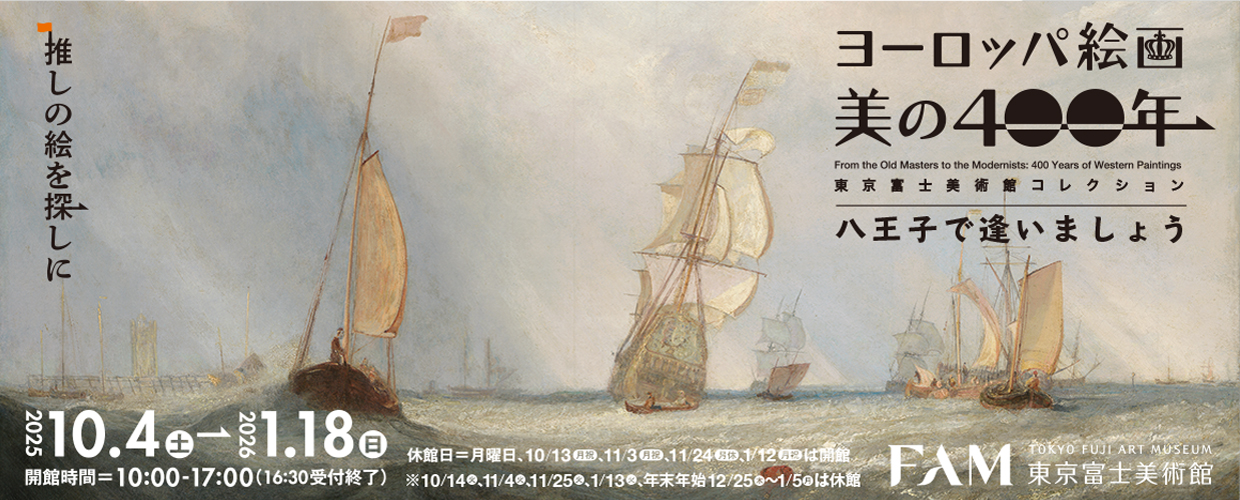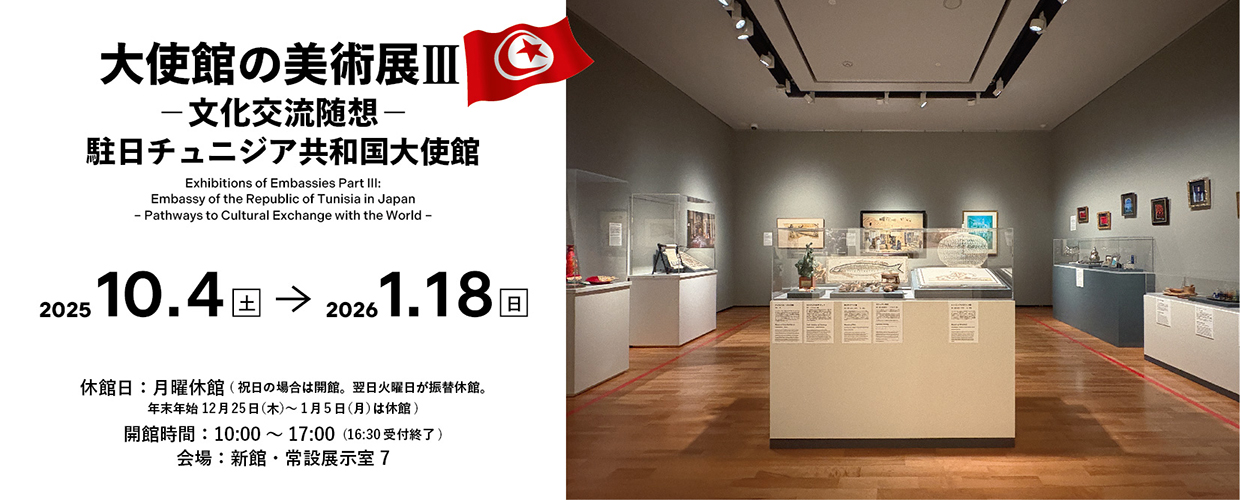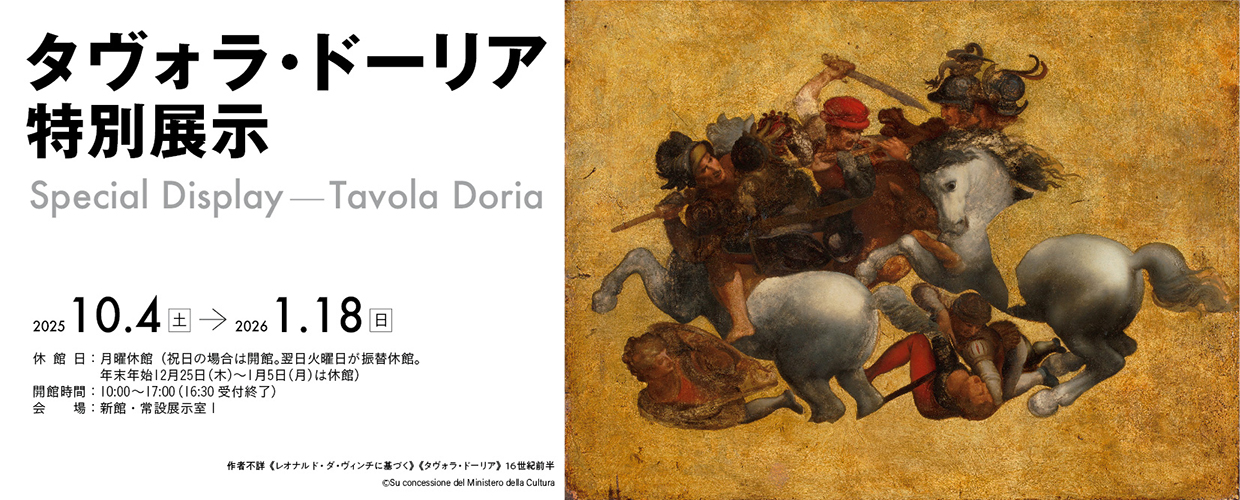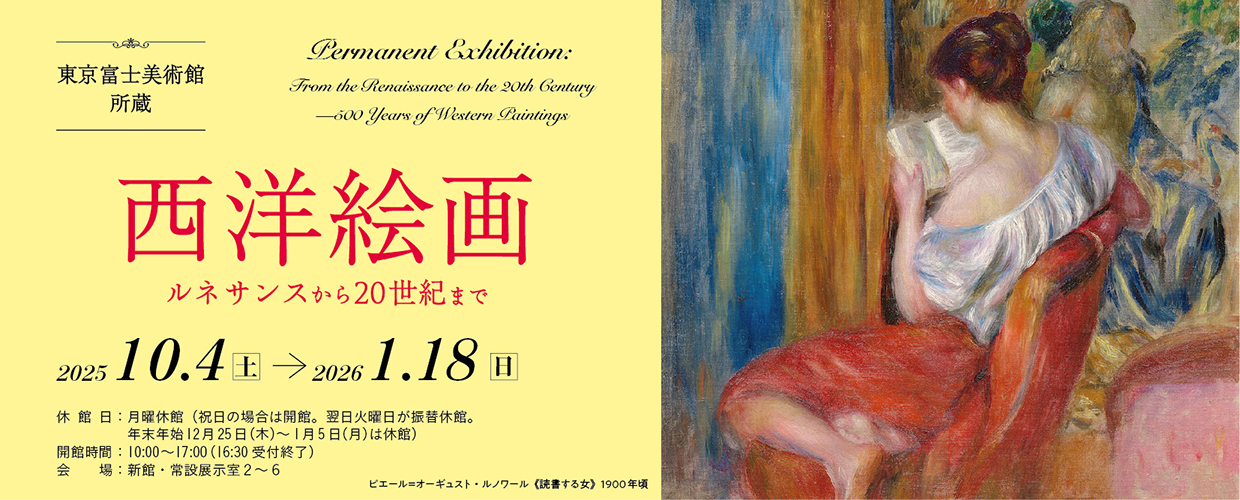December 1920 (Taisho 9)/Color on silk, hanging scroll
143.0 x 35.0 cm
SUMMARY
Five sparrows sit on plum tree branches in the snow. In both the snow and the bodies of the birds, white is expressed with uncolored space, and the work as a whole is created with a minimum of color. A note of authenticity on the box containing the piece dates it to December 1920. Two years before this, in 1918, Bakusen established the Society for the Creation of National Painting, and the year after, in 1921, he traveled to Europe. This period can be said to be Bakusen’s transitional phase, and the rough touch of the painting suggests his strong ambition to seek new forms of Japanese painting expression.
ARTIST
Tsuchida Bakusen
1887-1936
Tsuchida Bakusen was born in Sado, Niigata. At the age of 16 he became a student of Suzuki Shonen, and the following year he moved to Takeuchi Seiho’s private painting school and received the art name Bakusen. At the 10th Exhibition of New and Antique Artifacts he received the 4th prize for his work Seisho (“Cooling Summer Heat”) (collection of the Niigata Bandaijima Art Museum), and at the second Bun-ten received the third prize with Batsu (“Punishment”) (collection of the National Museum of Modern Art, Kyoto). In 1909 in enrolled in a short-term course at the newly opened Kyoto City Technical School of Art together with Ono Chikkyo, a classmate from his art school. In his class were Murakami Kagaku, Sakakibara Shiho, Nonagase Banka and Irie Hako. In 1910 he took part in the founding of Le Chat Noir, of which art historian Kisaku Tanaka was president. It was a wonderful opportunity for him to learn about Post Impressionism and other movements in Western art. In 1911 he submitted his graduation piece Kami (“Hair”) (collection of the University Art Museum, Kyoto City University of the Arts) to the 5th Bun-ten, and the following year Shima no Onna (“A Woman of the Island”)(collection of the National Museum of Modern Art, Tokyo), which was based on research he conducted in Hachijo-jima Island, to the 6th edition. He got honorable mentions for both pieces. He continued to submit pieces to the Bun-ten each year, including Ama (“Woman Diver”) (collection of the National Museum of Modern Art, Kyoto) to the 7th, Sange (“Rite of the Scattering Flowers”) (collection of Nakanoshima Museum of Art, Osaka) to the 8th, and Oharame (“Firewood Peddlers”) (collection of Yamatane Museum) to the 9th. In all of these it seems he sought to fuse elements of Japanese and Western art. However, at the 11th exhibition, Shunkin Chinsei Zu (collection unknown), which resembles intaiga – a form of Chinese Imperial Court painting – was not awarded any prizes, and works by Chikkyo and Kagaku were rejected, which made Bakusen’s underlying frustration with the Bun-ten more apparent. The following year, 1918, alongside Chikkyo, Kagaku, Shiho and Banka he formed the Kokuga Sosaku Kyokai (“Organization of Japanese-type Painting Creation”) and submitted Yuna (“Serving Girl in a Spa”) (collection of the National Museum of Modern Art, Tokyo) to the first Koku-ten (Kokuga Sosaku Kyokai Exhibition), receiving a lot of attention. In October 1921 he visited France and Italy with Chikkyo and Banka. This experience helped him to approach the beauty of Japanese art from a new perspective. In 1924 he submitted the famous work Bugirinsenze (“Maiko in a Garden”) (collection of the National Museum of Modern Art , Tokyo) to the 4th Koku-ten. He continued submitting works to Koku-ten after this, until at the 7th edition the Kokuga Sosaku Kyokai 1st Division, which focused on Japanese art, was dissolved. From then on, he and Chikkyo both participated in Tei-ten exhibitions. In 1929, at the 10th Tei-ten, Keshi (“Poppy”) (The Museum of the Imperial Collections) was purchased by the Imperial Household Agency. Around this time, there were various exhibitions that extended beyond the borders of specific organizations, and he was an active participant in Shichigenkai and Seikoukai. In 1933 he submitted Hira Yuka (“Korean Bench”) (collection of Kyoto City Kyocera Museum of Art) to the 14th Tei-ten. Towards the end of his life Bakusen’s paintings became clearer, and his style evolved into one of elegant simplicity. In 1934 he was nominated to become a member of the Imperial Fine Arts Academy. In 1935 a reorganization of the academy occurred, and Bakusen made great efforts to smooth the transition. He died of pancreatic cancer in June 1936, at the age of 49.
List of artworks by the same artist
INFORMATION

EXPLORE

You can search and browse content on a platform across museums and archival institutions nationwide, and create My Gallery (online exhibition).





